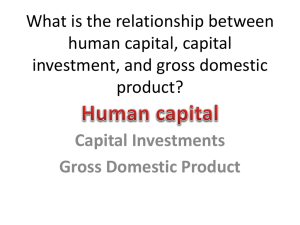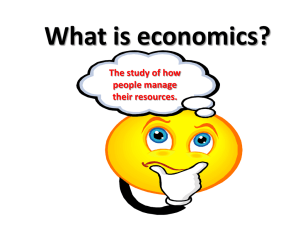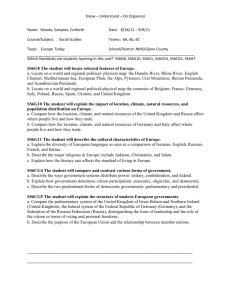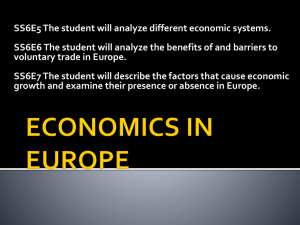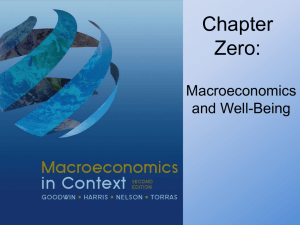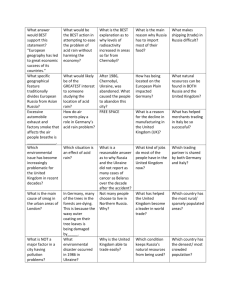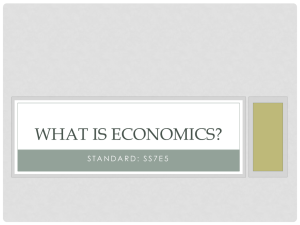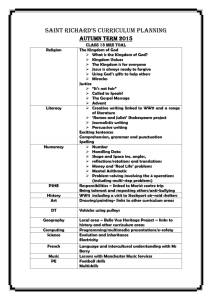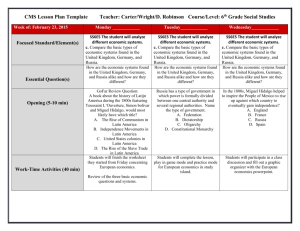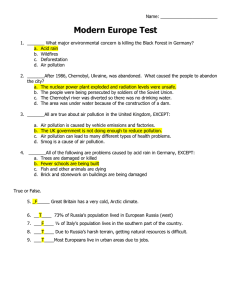Unpacking the Standards Unit 3
advertisement
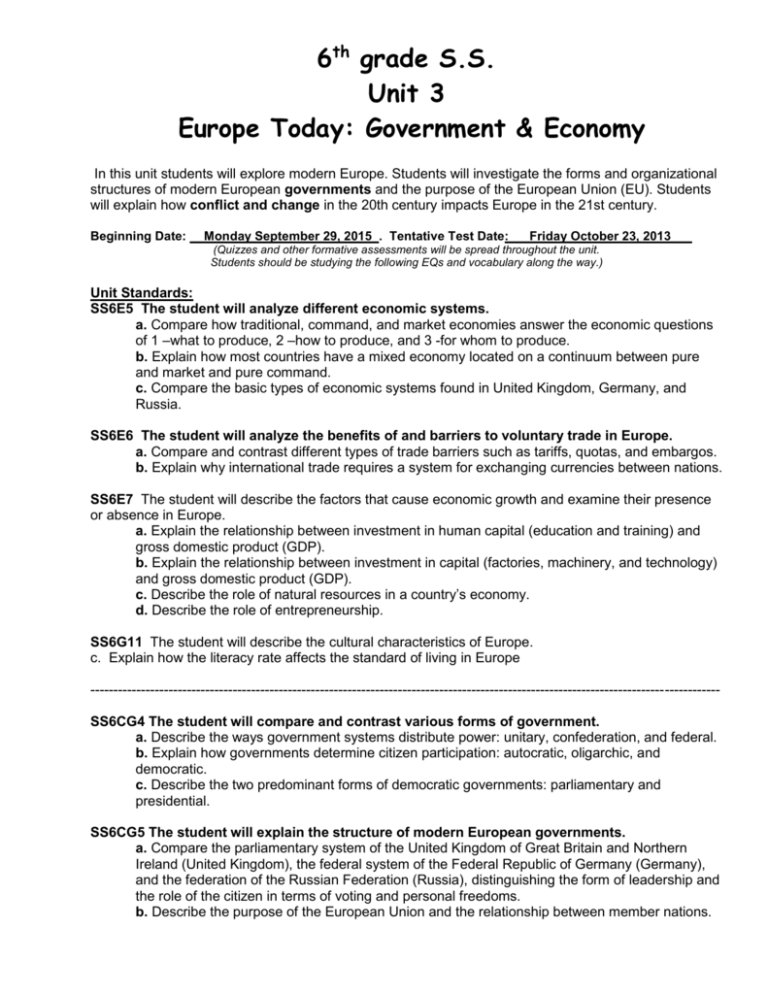
6th grade S.S. Unit 3 Europe Today: Government & Economy In this unit students will explore modern Europe. Students will investigate the forms and organizational structures of modern European governments and the purpose of the European Union (EU). Students will explain how conflict and change in the 20th century impacts Europe in the 21st century. Beginning Date: Monday September 29, 2015 . Tentative Test Date: Friday October 23, 2013___ (Quizzes and other formative assessments will be spread throughout the unit. Students should be studying the following EQs and vocabulary along the way.) Unit Standards: SS6E5 The student will analyze different economic systems. a. Compare how traditional, command, and market economies answer the economic questions of 1 –what to produce, 2 –how to produce, and 3 -for whom to produce. b. Explain how most countries have a mixed economy located on a continuum between pure and market and pure command. c. Compare the basic types of economic systems found in United Kingdom, Germany, and Russia. SS6E6 The student will analyze the benefits of and barriers to voluntary trade in Europe. a. Compare and contrast different types of trade barriers such as tariffs, quotas, and embargos. b. Explain why international trade requires a system for exchanging currencies between nations. SS6E7 The student will describe the factors that cause economic growth and examine their presence or absence in Europe. a. Explain the relationship between investment in human capital (education and training) and gross domestic product (GDP). b. Explain the relationship between investment in capital (factories, machinery, and technology) and gross domestic product (GDP). c. Describe the role of natural resources in a country’s economy. d. Describe the role of entrepreneurship. SS6G11 The student will describe the cultural characteristics of Europe. c. Explain how the literacy rate affects the standard of living in Europe ----------------------------------------------------------------------------------------------------------------------------------------SS6CG4 The student will compare and contrast various forms of government. a. Describe the ways government systems distribute power: unitary, confederation, and federal. b. Explain how governments determine citizen participation: autocratic, oligarchic, and democratic. c. Describe the two predominant forms of democratic governments: parliamentary and presidential. SS6CG5 The student will explain the structure of modern European governments. a. Compare the parliamentary system of the United Kingdom of Great Britain and Northern Ireland (United Kingdom), the federal system of the Federal Republic of Germany (Germany), and the federation of the Russian Federation (Russia), distinguishing the form of leadership and the role of the citizen in terms of voting and personal freedoms. b. Describe the purpose of the European Union and the relationship between member nations. 1. Essential Questions for the Unit: GOVERNANCE: The student will understand that as a society increases in complexity and interacts with other societies, the complexity of the government also increases. How is power distributed in different forms of government (unitary, confederation, and federal)? How do citizens participate in different forms of government (autocratic, oligarchic, democratic)? What are the important democratic features of parliamentary and presidential forms of government? How are the governments of the United Kingdom, Germany, and Russia different and how are these governments similar? What is the purpose of the European Union; and its motto? What are the member nations of the European Union; and their responsibilities? PRODUCTION, CONSUMPTION, and DISTRIBUTION: The student will understand that the production, distribution, and consumption of goods/services produced by the society are affected by the location, customs, beliefs, and laws of the society. How do the three types of economic systems (traditional, command, and market economies) answer the questions of what, how, and for whom to produce? How do most countries strike a balance between having a pure market and pure command economy? How are the economic systems of the United Kingdom, Germany, and Russia similar? How do trade barriers (tariffs, quotas, and embargoes) hinder voluntary trade from occurring between countries? Why is it necessary to exchange currencies for nations to trade? How does the European Union encourage voluntary trade among its members? How do the factors of location, climate, and natural resources impact trade in the European nations of the United Kingdom, Russia, Germany, and Italy? What is the relationship between human capital, capital investment, and gross domestic product (GDP)? How does the unequal distribution of resources affect European countries? What is an entrepreneur? Unit Vocabulary: ECONOMICS: European Union International (-trade) Currency Exchange Rate Trade Barriers Market Economy Entrepreneurship Factors of Production Welfare State Scarcity Command Economy Goods and Services (capital) Types of Capital Investment (factories, machinery, technology) GOVERNMENT: Prime Parliamentary Minister Democracy Democracy Federal Republic federation Unitary council Monarch legislature Parliament Gross Domestic Product (GDP) Euro Bundestag Bundesrat Free Trade Zone Traditional Economy British Pound Industrialized country Mixed Economy Human Capital House of Lords chancellor House of commons State Duma Constitutional Monarchy CULTURAL RELATIONS TO GOV & ECON: Standard of Third-world living country Literacy rate Welfare State
